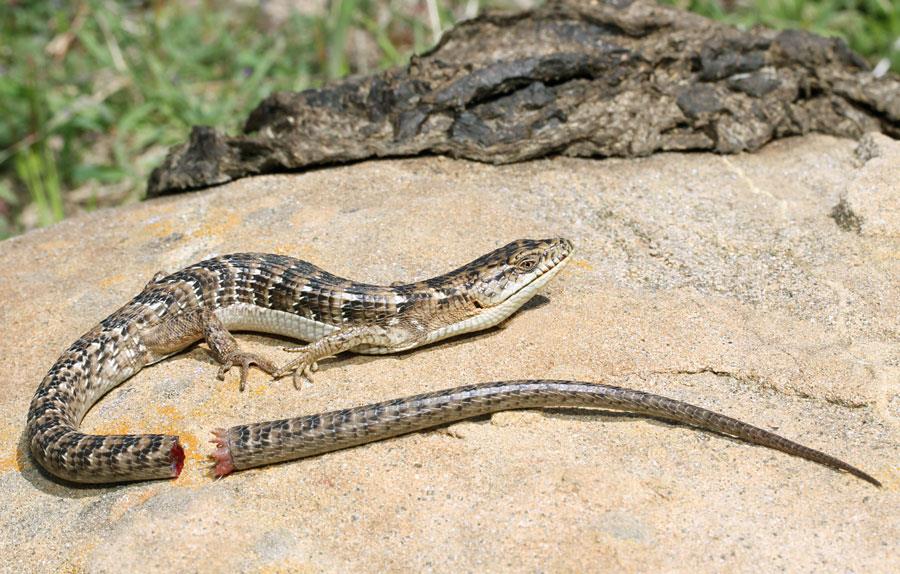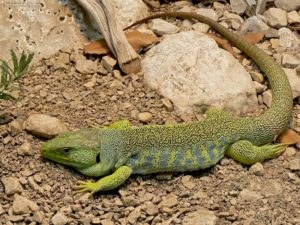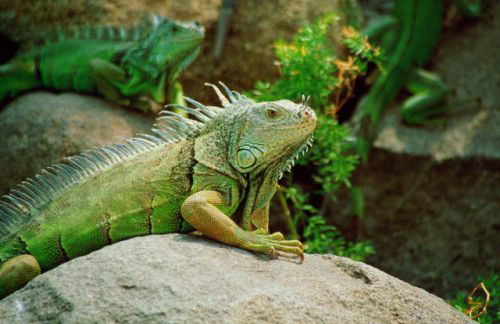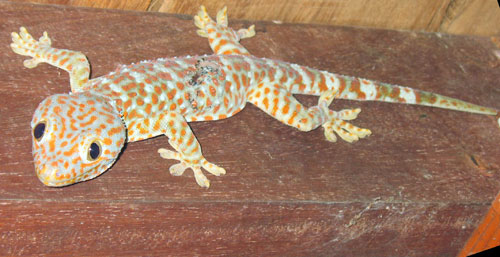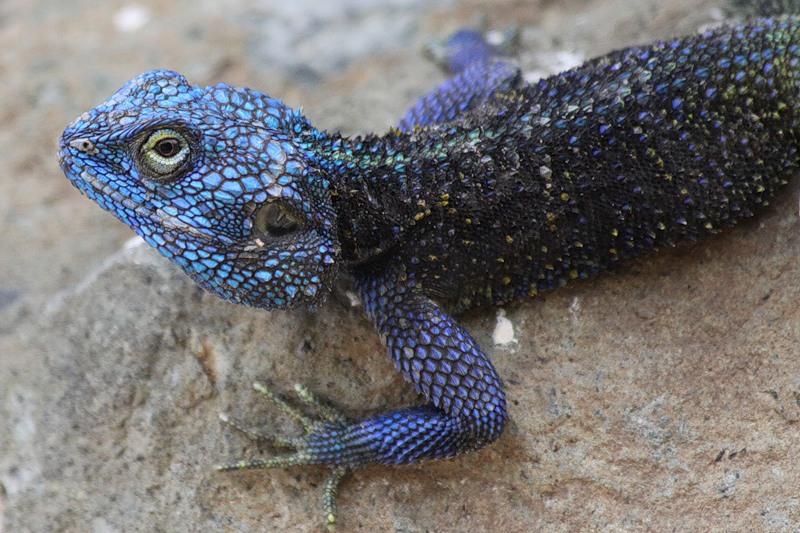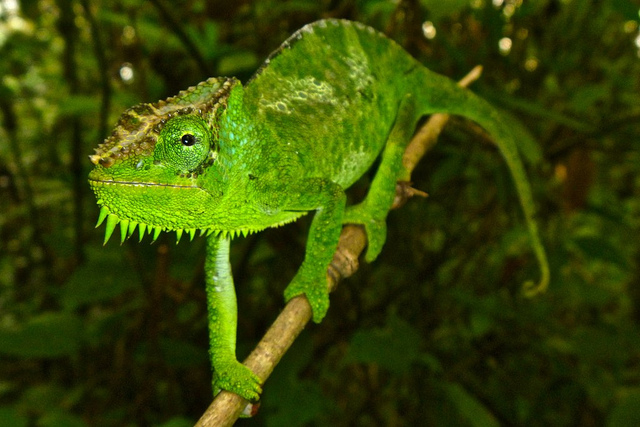Sections of the site
Editor's Choice:
- What to feed a hedgehog at home?
- How to make a poster with chocolates and inscriptions with your own hands?
- Do-it-yourself hazel onion
- What do you need for a picnic
- Pike head ear
- Rating of winter spinners for perch
- How to salt pike caviar
- How to make cheese at home - recipe
- How to care for a hedgehog at home
- How to make a hunting bow with your own hands?
Advertising
| Domestic lizards: types and rules of care at home |
|
Lizards are scaly reptiles with long tails and four legs. In fact, there are many types of lizards. For example, there is a separate suborder of legless lizards, which is almost impossible for a non-specialist to distinguish from snakes. Currently, scientists know more than six thousand species of lizards that live in almost every corner of the planet. These species differ in color, size and even feeding behavior. Many exotic species of lizards are kept in home terrariums and have adapted well to living in the city. Types of lizards, namesScientists divided all lizards into six orders, each of which contains about thirty-seven families. Let's try to briefly consider the main units: 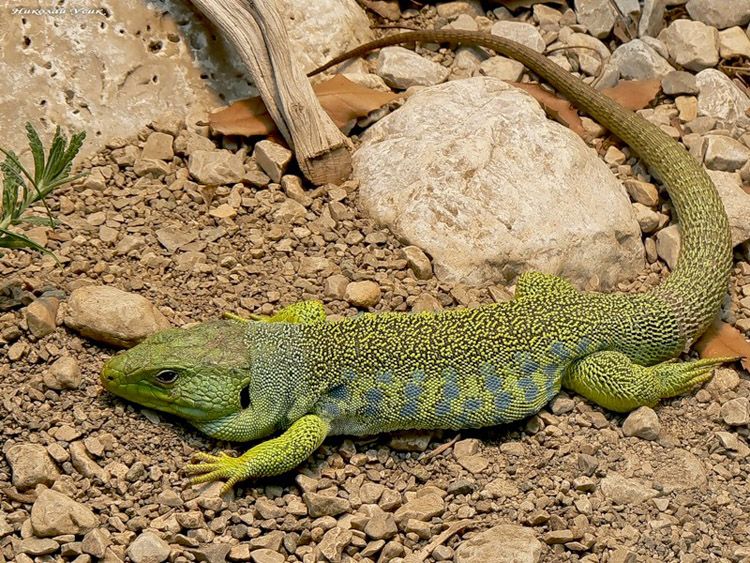 Lizards are so striking in their species diversity that they have many differences from each other. For example, the largest representative of lizards, the dragon from Komodo Island, weighed more than ninety kilograms. This handsome man is recorded in the Guinness Book of Records as the largest lizard in the world. Such heavyweights feed on small rodents and reptiles, and can also afford cattle, wild boars and horses. There have always been legends on the islands about monsters that ate people on Komodo Island. It is still unknown whether there is a real basis for this legend, but it is not difficult to imagine what sacred horror almost that hundred-kilogram lizards caused among uneducated islanders. Many still call such monitor lizards "Great Dragon". The difference between lizards and other reptilesLizards have a long body with even scales and clawed, tenacious paws that allow them to masterfully hold on to any surface. The color is usually combined from shades of green, brown and green. Some types of lizards can mimic. The desert reptiles were especially successful in this. The tongue of lizards is very mobile. It can have different shapes and colors. Most often, it is with the help of the tongue that these nimble reptiles catch their prey. Different types of lizards have teeth for different purposes. Some grind their prey, others tear them apart. For example, monitor lizards have very sharp teeth that literally cut their prey. Visually, many lizards look like snakes. The main difference is the clawed legs, but legless lizards do not have legs. How to distinguish a legless lizard from a snake? A few signs will help even a non-professional to understand the two types of reptiles:
Newts are close relatives of lizards and are very similar to them. But confusing them is quite difficult:
How does a lizard drop its tail?The lizard's tail throwing mechanism is one of nature's most interesting inventions. The tail of a reptile consists of cartilage, which, in case of danger, is easily broken by a powerful muscle spasm. Stress constricts the blood vessels, and the blood loss from tail flicking is never significant. The new tail grows long enough, it reaches its previous size in eight to nine months. Sometimes the body of a lizard fails and two or three new ones grow instead of one tail. Domestic lizards: content featuresCurrently, there is a great demand for keeping lizards at home. It is worth noting that in captivity these reptiles reproduce very well, and the survival rate of offspring is more than 70%. It is quite difficult to distinguish a male lizard from a female. The main differences appear only after puberty:
All these signs cannot give a 100% guarantee in determining the sex, so if you plan to breed lizards, then determine the sex of the individual by a blood test at a veterinary clinic. In the wild, the daily diet of lizards is very diverse. This predator prefers to hunt at dawn or after sunset. Most often, insects, worms and mollusks become food. Large species may feed on other reptiles, bird eggs, and small birds. Some lizards are vegetarians and eat only plants and fruits. At home, it is required to maintain a variety of daily food, although the lizard's diet may consist of the simplest foods:
You can feed the lizard three times a day in the hot season, and twice in the winter season. Despite the fact that the climate in the terrarium remains warm, the lizard feels the change of the season and significantly reduces its activity. Lizards breed well in captivity. The mating season begins in the spring and lasts several months. Large lizards bring offspring only once a year, small species can breed two or three times per season. In nature, males always compete for a female, the winner gets the opportunity to mate. In captivity, it is enough to put a pair in one terrarium and leave alone for a few days. During this period, lizards may refuse to eat, but clean water should always be within reach. Lizards can lay eggs or give birth to offspring already adapted to life. On average, lizards lay about ten eggs and hide them away from prying eyes - in the sand or behind stones. In this state, the eggs are up to forty-five days. Hatched cubs are almost completely independent. Viviparous species of lizards bear cubs up to three months. On average, the life span of an adult individual lasts no more than five years. Types of domestic lizardsMany exotic lizard species do well in captivity. They live several years longer than their wild counterparts and are much more likely to produce offspring. The most popular types of domestic lizards include: Agama beardedThis is one of the most unpretentious reptiles. It is ideal for beginner terrarium keepers who will have great fun watching their pet. In the wild, the bearded agama lives in Australia. For many years, the authorities of the continent tightly controlled the export of this reptile from the country, but already quite often you can meet this lizard on other continents, where it has successfully taken root. The reptile got its name thanks to the thorns and growths around the head, at one time it even bore the proud name "bearded dragon". The lizard can change color depending on the ambient temperature and its condition. iguana realThis large green reptile is known in certain circles under the name "common". Some specimens reach two meters in length and eight kilograms of total weight. Lizards of this species are completely unpretentious and are loved by terrariumists for their calm nature. Iguanas eat only plant foods. The most serious requirement in the content of this lizard is made to the equipment of the terrarium - it must be large and well lit. CurrentsThis baby is considered an Asian cuckoo. The spotted gecko can make funny sounds that, according to legend, bring happiness to the family. Asians have always brought this lizard into a new home as well as Russian cats. The gecko eats only plant foods, many owners even let him out of the terrarium to run around the house. tree agamaThis brightly colored lizard is ideally suited for tree life. She has long claws, and the ability to disguise herself among tropical greenery. Some species are bright blue. Agama mimics well and can imitate a green leaf and a dry branch equally well. This view is one of the most capricious. He can easily die in captivity if you do not follow some rules for keeping a reptile. At first, the agama is very wary of the owners, and then gets used to it and shows them an absolute ignore. Chameleon four-hornedThis lizard is a favorite of professional terrarium keepers. It fits perfectly into any environment, merging with all surrounding objects. This reptile feeds on insects and fresh juicy fruits. Keeping a chameleon requires some skill and skill. For example, this lizard does not drink water. To drink it, you should abundantly spray the vegetation in the terrarium or install fountains. It should be borne in mind that, despite the apparent slowness, the chameleon is a very aggressive lizard. She can even attack the owner. Lizards are very interesting and unusual pets. Good care and nutrition prolongs their life in captivity to the delight of caring owners. |
| Read: |
|---|
New
- How to make a poster with chocolates and inscriptions with your own hands?
- Do-it-yourself hazel onion
- What do you need for a picnic
- Pike head ear
- Rating of winter spinners for perch
- How to salt pike caviar
- How to make cheese at home - recipe
- How to care for a hedgehog at home
- How to make a hunting bow with your own hands?
- How to catch a wobbler

